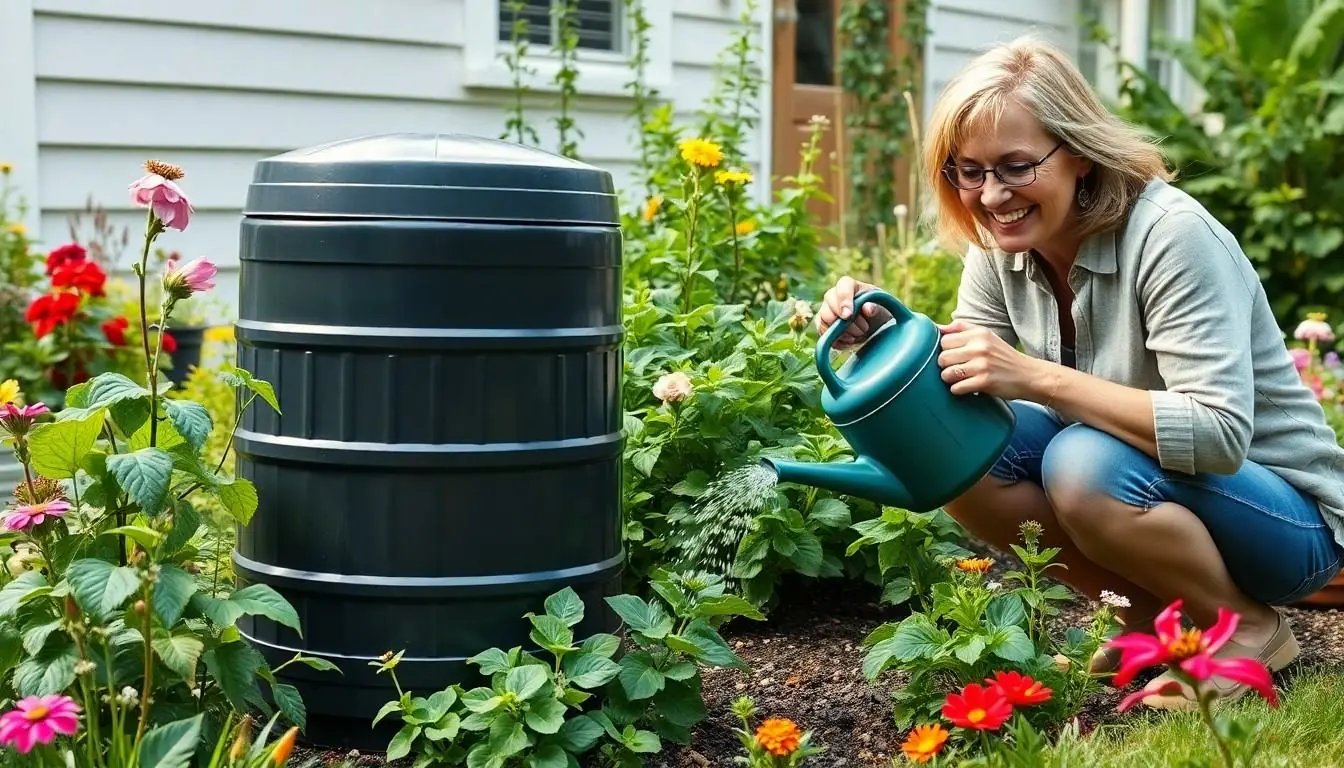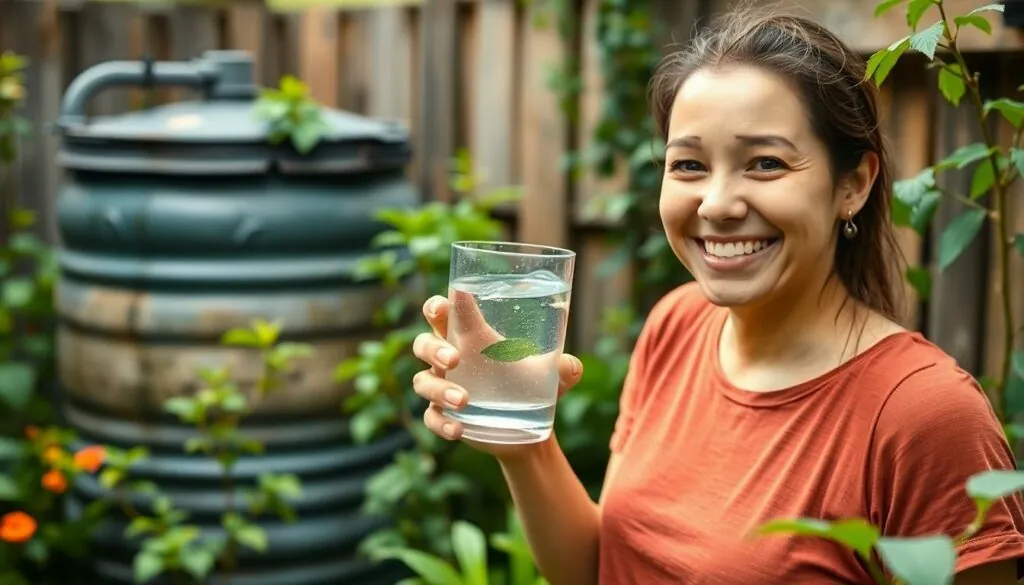Table of Contents
ToggleImagine sipping a glass of water that’s fresher than your morning coffee and packed with nature’s best nutrients. Sounds dreamy, right? Welcome to the world of rainwater wellness, where the sky’s bounty transforms into a refreshing elixir for health and vitality.
Understanding Rainwater Wellness
Rainwater wellness encompasses the health benefits gained from drinking rainwater, a natural resource abundant in essential minerals. This practice integrates sustainability with nutritional value, promoting a healthier lifestyle.
Definition and Importance
Rainwater wellness refers to the advantages obtained from harvesting and consuming rainwater. Drinking rainwater offers hydration often richer in minerals than tap water. Its purity, derived from the natural precipitation process, enhances health and environmental sustainability. Choosing rainwater as a beverage reduces reliance on bottled drinks, minimizing plastic waste and environmental impact. Individuals seeking natural, nutrient-rich hydration find rainwater an appealing alternative.
Historical Perspectives
Historically, diverse cultures have valued rainwater for its health benefits. Ancient civilizations enjoyed its refreshing taste and believed in its healing properties. Indigenous peoples often relied on rainwater for drinking, cooking, and ceremonial purposes, recognizing its spiritual significance. In many regions, people still utilize rainwater collection systems, emphasizing its relevance throughout history. Modern interest in rainwater wellness mirrors past practices, as health-conscious individuals explore natural sources of hydration.
Benefits of Rainwater Wellness

Rainwater wellness offers numerous advantages both for the environment and individual health. Below are key aspects that highlight these benefits.
Environmental Advantages
Rainwater harvesting reduces dependence on municipal water systems. This practice lessens the strain on local water resources, especially during droughts. Collecting rainwater minimizes stormwater runoff, which decreases the risk of flooding and soil erosion. It aids in replenishing groundwater levels, contributing to a more sustainable water cycle. Utilizing rainwater for irrigation reduces the need for treated water, preserving energy and chemical use associated with water treatment processes. Moreover, increased adoption of rainwater systems can lead to a significant decrease in plastic waste from bottled beverages.
Health Benefits
Drinking rainwater provides hydration that may be richer in essential minerals. This natural source contains fewer contaminants compared to standard tap water, enhancing overall purity. Numerous individuals report feeling more refreshed and energized after consuming rainwater. Its low chlorine content further supports digestive health. Rainwater’s mineral composition can vary, but it often includes beneficial elements like calcium and magnesium. By integrating rainwater into daily routines, individuals can foster better wellness while embracing an eco-friendly practice.
Rainwater Harvesting Techniques
Rainwater harvesting involves various methods to capture and utilize rainwater effectively.
Traditional Methods
Decades ago, many cultures relied on simple techniques for rainwater collection. They built catchment systems like ponds and cisterns to store water. These methods included sloped roofs directing rain into barrels or tanks. Gutter systems facilitated rainwater flow, ensuring efficient collection. Ancient societies often constructed stone reservoirs, which have proven effective through time. For irrigation, communities utilized buckets and small channels to distribute water to crops. These traditional practices demonstrate sustainability and resourcefulness in water management.
Modern Innovations
Today, technology enhances rainwater harvesting practices. Advanced filtration systems ensure water purity, making it safer for consumption. Smart technology enables automated collection and monitoring of rainwater levels. Many homeowners now install rain barrels with diverter systems that connect to gutters seamlessly. Furthermore, green roofs capture rainwater and promote natural absorption. Other innovations include underground storage tanks that compress space while maximizing capacity. Integrating modern methods fosters efficiency and increases awareness of sustainable water usage.
Integrating Rainwater Wellness into Daily Life
Incorporating rainwater wellness into everyday life enhances health and supports environmental sustainability.
Practical Tips for Homeowners
Homeowners can start small by installing rain barrels beneath downspouts to collect rainwater. Utilizing inexpensive filters ensures clean water for gardening or washing. Exploring green roofs provides additional surface area for rainwater capture, helping manage runoff effectively. Using drip irrigation systems with harvested rainwater promotes efficient watering while conserving treated water. Regular maintenance of collection systems enhances purity and prevents contamination. Emphasizing these simple methods encourages a sustainable lifestyle while maximizing the benefits of rainwater wellness.
Community Initiatives
Communities can foster rainwater wellness through awareness programs that educate residents on its benefits. Establishing local workshops to teach rainwater harvesting techniques empowers citizens to take action. Collaborating with schools can introduce students to sustainable practices and the importance of conservation. Initiatives might include community rain garden projects, promoting infiltration and biodiversity. Lastly, local governments can incentivize rainwater collection with rebates or grants, encouraging widespread adoption. Such community-driven efforts improve water management and instill a collective commitment to environmental health.
Challenges and Considerations
Rainwater wellness offers numerous benefits, but several challenges and considerations must be addressed.
Legal Regulations
Regulations regarding rainwater harvesting vary significantly by region. Many states have specific laws governing collection and usage, often aimed at ensuring safety and public health. Some locations require permits for installation, while others may restrict the types of systems homeowners can use. Understanding local guidelines helps individuals navigate legal landscapes effectively. Consultation with local authorities ensures compliance with regulations and fosters responsible water stewardship. Researching existing laws and participating in community discussions can enhance awareness of the legal aspects of rainwater wellness.
Quality Control
Maintaining water quality is crucial in rainwater harvesting. Contaminants can enter collection systems from various sources, including debris from roofs and pollutants in the air. Regular maintenance of gutters, tanks, and filters is vital for preserving rainwater integrity. Implementing filtration systems can further enhance purity before use. Testing water periodically for microbial or chemical contaminants provides reassurance about safety. Adopting best practices in system design and upkeep encourages high-quality water. Engaging with professionals for installation and maintenance can ensure optimal performance.
Embracing rainwater wellness offers a refreshing path to improved health and environmental sustainability. By choosing to drink rainwater, individuals can experience enhanced hydration and a wealth of essential minerals while reducing reliance on bottled beverages.
This practice not only promotes personal well-being but also supports eco-friendly initiatives by conserving resources and minimizing plastic waste. As communities come together to adopt rainwater harvesting techniques, they foster a culture of sustainability that benefits both individuals and the planet.
Ultimately, integrating rainwater into daily life is a step toward a healthier lifestyle and a more sustainable future.





